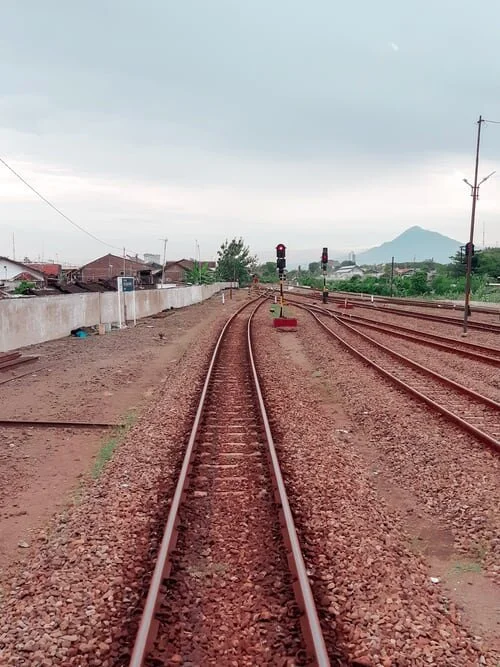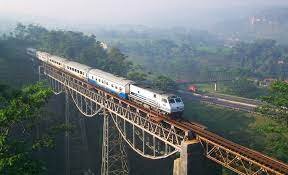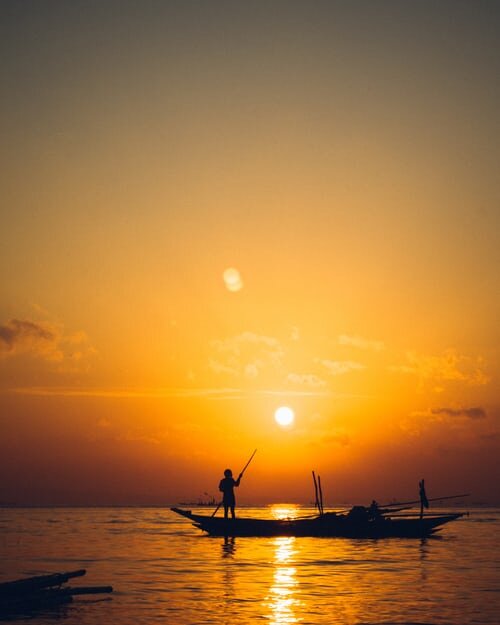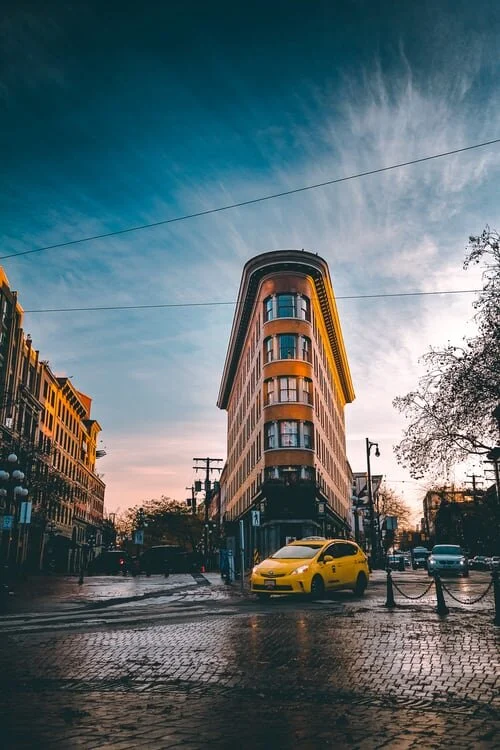Riding the Iron Dragon Around Java.
There’s something inherently romantic about train travel, and, even now, when we can cross continents in hours by commercial aircraft, there is nothing quite like the leisurely pace of covering the same distance by rail.
On the island of Java in Indonesia, trains are the most comfortable, fastest and easiest ways to crisscross this part of the Archipelago. The railway service connects with the ferry to Bali in the east and Sumatra in the west.
The Java Express is undoubtedly one of the world’s most romantic and charming rail journeys one can undertake. The carriages are sparkling clean, air-conditioned and extremely comfortable with seats that recline, allowing passengers to either grab a nap, watch a movie or be lulled into a sense of contentment by watching the ever-changing scenery pass by.
Due to the undulating terrain, the locomotives travel at what can only be called a ‘sedate’ pace along a single track that snakes through terraced rice fields that tumble down steep hillsides and then does a switchback to wind around several magnificent dormant volcanoes. Speeds increase once the track hits the plains, where vast expanses of verdant green rice paddies stretch from horizon to horizon tended by conical hat-wearing farmers toiling in the stifling heat.
The island of Java is home to almost seventy million souls, making it one of the most densely populated rural regions on the earth. Over the last century, small towns and villages have sprung up along the train tracks, lured there to transport their harvests of coffee, rice, tobacco and a wide variety of fruits and vegetables to market.
Indonesia’s Archipelago sits atop the famed ‘ring of fire’, and seismic activity never seems to be that far away, for it has always been so since Java man inhabited this island some 10,000 years ago. A few miles out from Jogjakarta the line meanders past Mount Merapi smouldering like a sulky child, and, every few years, it has a titanic tantrum. Some have been relatively violent, especially the eruptions of 2006, 2010 and 2013.
In Merapi’s shadow are two of the world’s most remarkable religious monuments — the 9th-century magnificent temple of Borobudur, the world’s largest Buddhist monument. An added bonus is, just forty kilometres away are the imposing Hindu temples at Prambanan, a sprawling complex that has surpassed even the largest temples in India for centuries.
Merapi’s periodic eruptions and accompanying earthquakes have vented their fury on these two world heritage listed sites, almost destroying Borobudur and burying it in volcanic ash. The Prambanan temples were not spared the earthquake's wrath either when those self-same earthquakes rattled the structure to its core bringing down several outlying temples in 2006.
n the 10th century, these incredible structures were hastily abandoned, perhaps succumbing to Merapi’s power. Within just a few short years, these massive temples were swallowed whole by the surrounding jungle. They remained hidden until the 18th century when Governor Raffle’s engineers 'discovered ‘ them and brought them back to life’.
Our journey took us to the charming city of Yogyakarta, which has been a Muslim sultanate since the 16th century but still retains so many symbols of much older imported religions making this vibrant city the cosmopolitan centre of West Java.( It is also world-famous for its eclectic street art) It has become a guardian of syncretic Javanese culture encompassing music, dance and the evolution of a thriving batik textile industry. In many ways, it is also a bastion against the Islamic orthodoxies that have filtered down from the Middle East regions.
Our stay was made all the more comfortable with two nights spent at the splendid Phoenix Hotel a beautifully restored Dutch Heritage hotel close to the city centre. A couple of nights here will take you back to an altogether different time in Indonesia’s history.
An excellent side trip from Jogjakarta is to head to the city of Magelang in Central Java ( two-hours by car). Here is the village of Losari and the altogether splendid resort of Mesa Stila, a former Dutch coffee plantation converted to a luxury hideaway by renowned Italian developer Gabriella Teggia.
For me, this is one of the finest resorts in Indonesia, with its 22 hectares of rolling gardens containing twenty- three luxurious ‘Joglos’ and a Turkish Spa that appears to have been transported from the old city of Istanbul. The resort nestles in a tranquil valley surrounded by no fewer than eight dormant volcanoes and a thriving coffee plantation. A two, or three-night stay here is food for the soul.
Returning to Jogjakarta is a comfortable car journey to catch the midday train to Surabaya in East Java. The train from here makes its way through the Javanese highlands, passing through Solo, a charming and somewhat sleepy city. If time permits, Solo is well worth a stop before heading to the wooded town of Malang, where the air is crisp and cool after the oppressive heat of the plains.
The trick of traversing Java by rail is to break one’s journey each night and stay at any one of the many Dutch Heritage hotels. Many of these beautiful hostelries have been meticulously restored to their former glory and are the perfect accompaniment to the romance of rail travel.
The Tugu Hotel in the centre of Malang is a classic example of architecture from a bygone age. This rambling two-storied structure has been lovingly transformed into a virtual museum, filled to the brim with artefacts and precious artworks dating back to the early period of Dutch occupation.
Several times a year, the central square is closed off to traffic, and hundreds of locals and tourists alike gather under the trees to witness the wonders of “Wayan Kulit” puppetry. These shadow puppets, operated by just one puppeteer, tell elaborate and epic tales and myths from ancient Javanese culture. Beware though, many of these performances can, and often do, last all night!
A two-night stay is highly recommended before once again boarding the Java Express for the leisurely six-hour journey across the central plains to the city of Surabaya.
Here is a sprawling metropolis of over three million people and has always been (after Jakarta) the beating heart of commerce on the island. A deepwater port plays host to fleets of inter-island sailing boats and a constant stream of container ships arriving and departing with holds full of cargo. It's easy to see why Java has, for 2,000 years, played vital roles in the globalization of commerce.
Surabaya played an integral part in the independence movement at the end of World War 11, with a famous battle fought within The Mujahapit Hotel's grounds. It is where the weary traveller should head. With its unusual art deco port cohere, this historic Dutch Heritage hotel was built after the original façade was destroyed in the battle. This hotel is a place of sprawling elegance and, once inside, the noise of the city traffic is replaced by the soothing sound of birdsong from the immaculately tended gardens.
It is possible to head south by rail to the port town of Banguwangi and take a ferry to the island of Bali. Still, most rail travellers tend to complete their journey here as international and domestic air services are efficient and frequent.
And so one of the great railway journeys is complete, and you have braved the threat of the earthquakes and eruptions, while Java rail has taken you on a tour of sensational world history and unparalleled beauty. Once this pesky pandemic is over, treat yourselves to a trip of a lifetime. Its an experience to savour.
Photography copyright E.J. Lenahan and Paul v Walters
Surabaya, Indonesia . October 2019






















